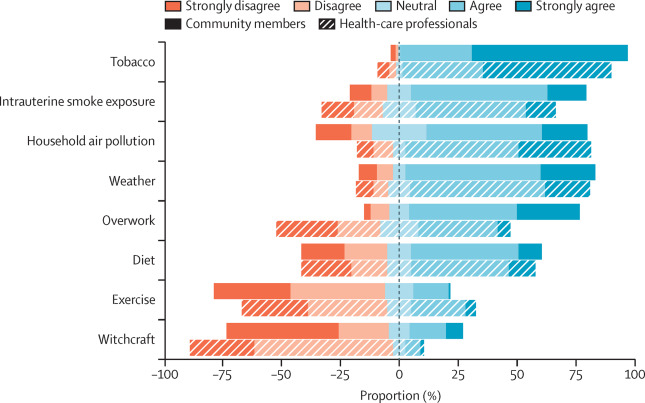This paper studied the heavy metal concentrations in the study area had a temporal decreasing trend compared to previous studies, which may be due to the reduction in human activities.
The COVID-19 pandemic has devastated communities throughout the world. However, the negative impacts of another pandemic, affecting cities worldwide, arguably rival those of COVID. This destructive global health problem, which we have largely ignored, has been described as the “hurry virus” – the culture of speed that dominates modern lives and cities, causing us to constantly strive to ‘go faster’. This hurry virus has comprehensively infected our city transport systems from the early 20th century.
Background: Combustion-related nitrogen dioxide (NO2) air pollution is associated with paediatric asthma incidence. We aimed to estimate global surface NO2 concentrations consistent with the Global Burden of Disease study for 1990–2019 at a 1 km resolution, and the concentrations and attributable paediatric asthma incidence trends in 13 189 cities from 2000 to 2019.
Background: Effectiveness of health programmes can be undermined when the implementation misaligns with local beliefs and behaviours. To design context-driven implementation strategies, we explored beliefs and behaviours regarding chronic respiratory disease (CRD) in diverse low-resource settings. Methods: This observational mixed-method study was conducted in Africa (Uganda), Asia (Kyrgyzstan and Vietnam) and Europe (rural Greece and a Roma camp). We systematically mapped beliefs and behaviours using the SETTING-tool.
Elsevier,
Managing Treatment-Resistant Depression: Road to Novel Therapeutics, Volume , 1 January 2022
This content aligns with Goal 3: Good Health and Wellbeing as well as Goal 10: Reducing Inequalities by reviewing the data on clinical and epidemiological predictors of antidepressant response, or predictors of treatment-resistant depression and discussing the possible prognostic value of clinical features, like severity, chronicity, subtypes of depression, comorbidities, history of trauma, and epidemiological features like gender, age, sociodemographic status.
Elsevier,
Biomedical Engineering Applications for People with Disabilities and the Elderly in the COVID-19 Pandemic and Beyond, Volume , 1 January 2022
This content aligns with Goal 3: Good Health and Wellbeing as well as Goal 10: Reducing Inequalities by examining the impact of the COVID-19 pandemic on the physical and mental health of the elderly.
This content aligns with Goal 3: Good Health and Wellbeing as well as Goal 10: Reducing Inequalities by exploring herbal medicines role in depression to provide alternatives to current psychiatric drugs which may cause many induced side effects.
This content aligns with Goal 3: Good Health and Wellbeing as well as Goal 10: Reducing Inequalities by providing different levels and magnitude of explanation for the various behavioral symptoms seen in individuals with ASD, collectively providing a comprehensive picture of this disorder.
Elsevier,
Managing Treatment-Resistant Depression: Road to Novel Therapeutics, Volume , 1 January 2022
This content aligns with Goal 3: Good Health and Wellbeing as well as Goal 10: Reducing Inequalities by reviewing the evidence base for treatment of youth with depression, with a focus on management of treatment-resistant depression.
Elsevier,
Managing Treatment-Resistant Depression: Road to Novel Therapeutics, Volume , 1 January 2022
This content aligns with Goal 3: Good Health and Wellbeing as well as Goal 10: Reducing Inequalities by exploring novel and advanced personalized medicine approaches to tailor depression treatments.

